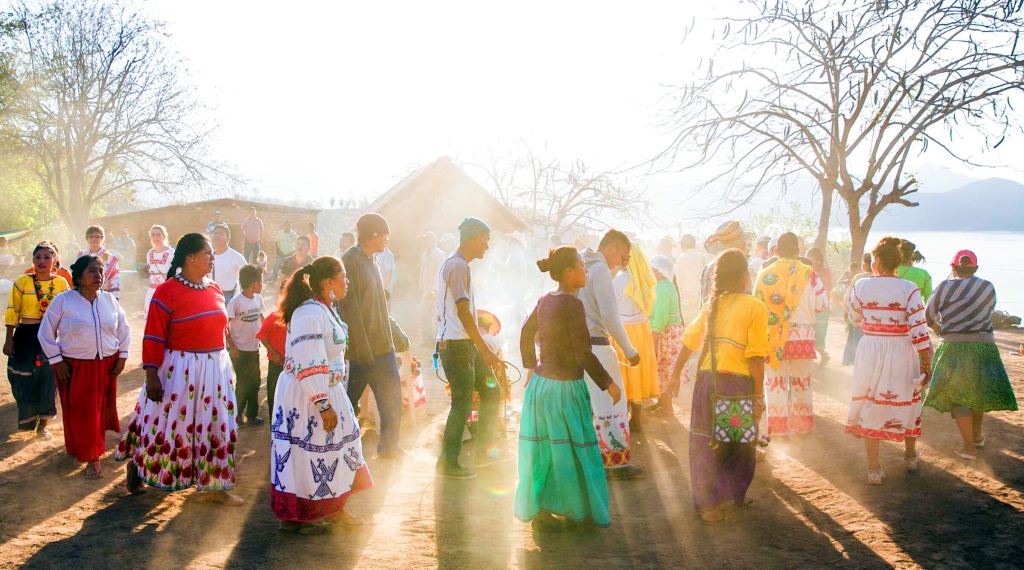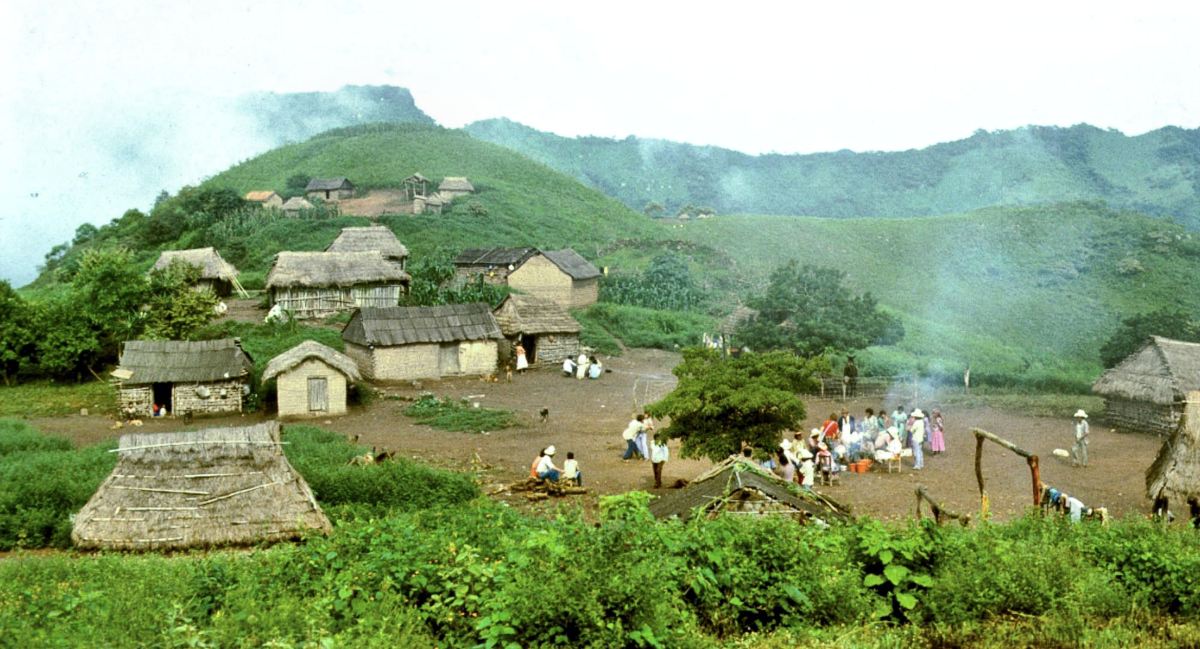by Richard L. Thornton, Architect & City Planner
Good things happen when a geneticist and an architect share their research!
The other day, Don Yates, founder of DNA Consultants, Inc. contacted me with a question. He was finding Huichol DNA markers in Muskogee-Creek individuals. Bingo! That rang a bell, because I had for some time tried to figure out why the traditional architecture of the Muskogee-Creeks . . . but not the other branches of the Creeks . . . was identical to that of the Huichol even today. Many Muskogee-Creeks, but not the other branches, are also showing up with Pima DNA from Northwestern Mexico. That tells us something very important about the past migrations of peoples.

_
The Huichol were one of the peoples of northern and north-central Mexico, who the Mexica (Aztecs) and Spaniards labeled Chichimeca (Coyote People). They were consummate guerilla fighters, who neither the Mexica nor the Spaniards really wanted to mess with. They refused to assimilate with Spanish culture and still primarily speak their own language to this day. They ultimately were forced at gunpoint a little over a century ago to be baptized as Roman Catholics, but the label today is still superficial. They do not allow missionaries or Mexican public schools in their territories.
They are particularly hostile to Gringo missionaries. There have been several instances of the Huichol men displaying firearms to drive away delegations from Evangelical churches in the United States, who wanted to build schools and Protestant churches in their midst.

_
This genetic and architectural information radically changes the understanding of the origins of the Creek People. What we are telling you is that the Muskogee Creeks were NOT originally Muskogeans! We already knew that they originally were a small minority of the “Creek” population, but their military skills put them at the top of the political ladder in the 1700s and the Muskogee language was adopted as the official language for political meetings.

Perhaps the name of this language family should be changed to Choctawian, or something like that. Several of the Creek Migration Legends describe a journey by land from Mexico then a period when that particular band settled in the swampy lands near the Lower Mississippi River. All Itsate, Highland Apalache and Uchee legends describe an arrival in the Southeast via the ocean. Evidently, while living in the Mississippi River Basin, the Huichol immigrants lost most of their original tongue and began speaking a dialect of Choctaw or Chickasaw, which over time evolved to another language. Some words in the Muskogee Language apparently were absorbed from the Southern Shawnee, when they were living in the mountains between Franklin, Asheville and Brevard, North Carolina.
Future challenges for DNA research
Dr. Yates now believes that it will be impossible to develop a single DNA test marker for either the Cherokees or Creeks, living in Oklahoma, because they have been mixing with other tribes for almost two centuries. In fact, both the Cherokees and the Creeks are really assimilations of many peoples, which occurred in the Late Colonial Period.
Federal bureaucrats over the years have pushed the idea of these tribes being distinct ethnic groups as an ego-building tool to justify such concepts as “blood quantum” and special status for federal recognition. However, the only locations where one finds distinct patterns of DNA markers are in the Southeast among bands, which may or may not have federal recognition.
- The Miccosukee of South Florida originally lived in Northeast Georgia along the Soque River. Their name means “Leaders of the Sokee (Soque).” Sokee is a Mixtec-Zoque word from Mexico, which means “civilized.” The Mikkosukee are a mixture of Zoque, Itza Maya and the Yucatec Mayas, who fled to Florida to escape Spanish oppression.
- Hitchiti-speaking Seminoles in Florida and Oklahoma typically have a mixture of Itza Maya, Muskogean and Panoan (Peru) DNA markers.
- The Cherokee Bird Clan (Ani-chisqua) began as the Chiska Tribe of Northeast Tennessee. They were the same people as the Chiska of Peru, who were Panoans. Chiska means “bird” in Panoan, but modern Cherokee uses a different word for “bird.” However, after three centuries of mixing, contemporary Bird Clan members may not carry Panoan DNA.
- It may be possible to develop DNA test markers for the Snowbird Cherokees, who are primarily a mixture of Soque (southern Mexico) with Uchee from Georgia. The Snowbirds are called “Moon Faces” by the Cherokees on the main Qualla Reservation.
- The Tamatli Cherokees of Hayes & Cherokee Counties, NC are a mixture of Itza Maya and Panoan (Peru). Their DNA is almost identical to that of the Itsate (Hitchiti) Creeks of Georgia and Florida.
- The Towns County Indians in Northeast Georgia are a mixture of Itza Maya and Southern Arawaks from Peru.
- The Northeast Georgia Creeks are a mixture of Itza Maya, Panoan and Uchee . . . the Uchee being defined as a mixture of Sami, Finnish, Basque and Pre-Celtic Iberian/Irish mixed with American Indian.
- The Eufaula Creeks were originally Panoans from the Georgia Coast. The Creek Confederacy placed all non-Muskogee speaking tribes on the Lower Chattahoochee River. Muskogee-speakers were in the Columbus, GA area and along the Middle Chattahoochee and Tallapoosa Rivers.
- The Savannah River Uchee are often tri-racial, but will have much more evidence of Uchee type DNA markers than the Northeast Georgia Creeks.
- The Upper Creeks in Alabama are a mixture of Toltecas from Mexico and the Chickasaw.
Humans have a very long and complex history in Southeastern North America. Many years of multi-disciplinary research will be required to obtain a complete history of its past . . . if that is even possible.

What would a match to Mestizos from South Eastern Guerro state indicate?
LikeLike
J’Mari, there are some ancient structures in central Georgia that can be found in Guerro such as the Rock Eagle and Rock Hawk, which are actually a vulture and a Painted Bunting. Many small bands migrated from Mesoamerica to the Southeast to escape persecution from powerful city states.
LikeLiked by 1 person